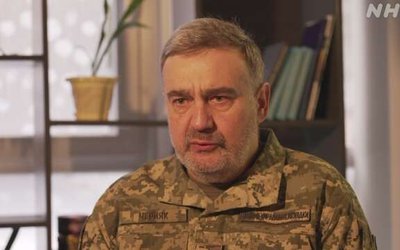
It is the time of the year when newspaper cover pictures invariably flip dramatically from showing long lines of dry pots waiting to be filled at community water standposts with headlines like “kakakul basti” (Thirsty Settlements) in May to “Sadak Ma Khola” (Rivers Overflow into Streets) once the monsoon rains start in June. It is a ritual piously followed by editors of major dailies without bothering to reflect on why this invariably happens year after year. For too long weaned on the wrong belief that Nepal is rich in water resources (it is NOT: as with the rest of semi-arid South Asia, we are rich in four months of floods and eight months of drought), they rarely provide answers or insightful op-eds.
That state of affairs might finally be changing with two maverick non-party mayors – Balen Shah in Kathmandu and Harka Sampang in Dharan. The former has made it his mission to reverse river bank and flood plains encroachment by demolishing structures (illegally and with a lot of land mafia corruption underlying them) built on such lands. The latter has had exemplary success in bringing water to his city with off-beat schemes that never entered into the thinking of central agencies in Kathmandu. The planners’ eagle’s eye approach of missing specific tree for the forest has never given space to the toad’s eye view of ground reality that dedicated mayors and ward chiefs face every day, slogans of federalism and decentralization notwithstanding.
The kind of “flood” Kathmandu and other cities experience, with streets running full of water as if it were a river, is not because of too much rainfall: indeed, during the most recent flooding one saw in Kapan rainfall was not the extreme of cloudbursts but a normal monsoon event. It happened because houses were built on the river’s natural flood plains forcing it to seek its old path, in Kapan’s case the main road built by forcing the river underground into 48” hume pipes. The now built areas were previously rice fields that now no longer store the rain to allow most of it to seep into the groundwater, thus recharging wells and dry season flow of rivers. Whatever rain occurs now has to immediately run off cement roof tops to whatever drainage it can find because building permits have been issues without requirements of rainwater harvesting and recharge of groundwater. Furthermore, whatever stormwater and regular drains have been built are not only inadequate in size but are frequently blocked by discarded plastic and other garbage.
Similarly, urban water shortages are hardly due to any decrease in overall precipitation in the country. The first cause is booming urban population demanding more water as Nepalis give up on farming because they cannot compete with imported foreign grain and vegetables and move to cities in droves. Second, urban water supply system’s underground pipes leak like a sieve. An old estimate of 1987 for technical loss and outright theft when I was member of the Pokhrel Commission investigating World Bank’s failure with its 12-year water supply projects was 70% for Kathmandu Valley. I have not seen signs of any positive management improvement to decrease this number. Third, springs in the hills and wells in the Tarai are the main sources of drinking water in Nepal, and they are drying up. The primary cause is misuse of pump technology leading to over-pumping without any commensurate recharge or other storage plans. Other causes are neglect of traditional ponds that held back rainwater from immediately running off (contributing to flooding) and allowed for slow seepage to underground storage from which springs drew their sustenance.
Both floods and droughts as such are caused mainly by mal-development, which is within our power to correct as the two mayors are trying, and not by climate change, as yet one might add, since climate change will make things much worse in the future if such mistakes are not corrected. Unfortunately, climate change has become a useful but very wrong means of escapism for both national agencies and international development outfits, allowing them to smokescreen their past mal-development activities (such as allowing flood plains encroachment, bad water projects etc.). Climate change – brought about by industrial capitalism using the atmosphere as its pollution sink that results in more heat energy trapped within it leading to extreme weather events as it dissipates that heat – is on its inexorable march. And the procedural fetishism of all the COPs seem unable to come up with any meaningful measures to slowing it down, let alone reversing it. Countries like Nepal on the fatalistic receiving end can do little about it, but it can undo its own mistakes of mal-development which otherwise will make climate change impacts on floods and droughts much worse.
A few years back, researchers from Nepal Water Conservation Foundation together with Policy Entrepreneurs Inc. and International Water Management Institute-Nepal supported by Canada’s IDRC conducted a study of water-induced disasters and “those left behind”, i.e., those being (in the context of a remittance economy) women, children, aged and the handicapped. Its findings brought up several surprises as open-minded researches often do. The first was that, in Nepal’s context, it is not just floods and drought that are water-induced disasters, serious though they are, but include water-bourne pesticides, lightning strikes, and marijuana farming as well. Misuse of pesticides – many of them banned abroad and even those not banned but over-used or handled improperly – are finding their way into food chains and water bodies. They have led (in pocket vegetable growing areas) to cancer among even young children and girls (since most vegetable farming is done by women in a male out-migrating remittance economy), to wild animals in Chitwan National Park dying, and to fish stock in the Kulekhani reservoir coming down from 50 tons a year to 5 tons.
Lightning paradoxically turns out, especially in the mid-Hill Mahabharat range, to be a water-induced disaster that is very poorly studied and not much done about. Villagers say lightning strikes have increased over the years, the causes being both climate change-induced increase in extreme events such as thunder storms as well as poor earthing of rural electrical distribution systems that have now expanded to over 90% of Nepal’s population. Women groups reported mass killings by lightning strikes of both livestock in their sheds as well as poultry farms, causing immense economic loss and forcing them back into poverty with the loss of a major income source.
Such disasters as well as drying up of local springs have harmed the livelihood of rural families who (especially the poorest among them) are forced to look for alternative sources of making ends meet. For this, they turn to what has traditionally grown in the Nepali hills in many different species and is used in Shivite religious rituals – ganja (or cannabis, hemp, marijuana etc.). Under pressure from the US, Nepal’s King Birendra was forced to ban its cultivation, even though it grows wild in Nepal and even in one’s city lawn if one does not mow it, and it requires no irrigation or other scarce water supply needs! Reagan administration, unable to control drug demand and misuse within the US resorted to pressuring countries like Nepal and bombing Columbian villages to curtail supply. Even though the US and Canada have now legalized its cultivation and use, Nepal continues to honour its commitment to the US, much to the harm of its marginalized farmers in the mid-hills trying to eke out a living.
Where an unfortunate gender dimension enters this picture is in the mismatch between ground social realities and the law regarding cannabis. It is a cat-and-mouse game between poor villagers carrying it to the market and the police; and the ones arrested are not the rich transborder dealers (who seem to be in good terms with the authorities) but the poor porter (mostly a male) who is incarcerated for an extended period of time. This adds to the burden of the woman who perforce becomes the head of the household responsible for all duties including that of the arrested man.
An interesting aspect of this research was that most of the women researchers were scientists who resented being labeled with the gender tag, a tension that exists within the feminist movement between women professionals and agency gender experts. Along the course of the research, however, they came to appreciate gender’s intersectionality with their own water science. They also began to appreciate the difference between Northern versus Southern approaches to gender studies in that the former is based on methodological individualism that prioritizes the individual within the state, whereas the latter sees the woman as part of the social order that places – especially during disasters – family first, clan and neighbourhood second, and the state last. This also is the future challenge that mayors such as Balen and Harka will have to grapple with as they address second generation issues with urban floods and water scarcity.

Dipak Gyawali
Gyawali is Pragya (Academician) of the Nepal Academy of Science and Technology (NAST) and former minister of water resources.
- Re-Thinking Democracy: Why South Asians Are worried
- Mar 17, 2025
- Nepal’s Governance Mired In Endemic Corruption
- Feb 20, 2025
- What Might The Age Of Trump Look Like?
- Jan 22, 2025
- Kathmandu Dialogue With Dugin
- Dec 25, 2024
- Bioregionalism Satsang
- Sep 27, 2024













